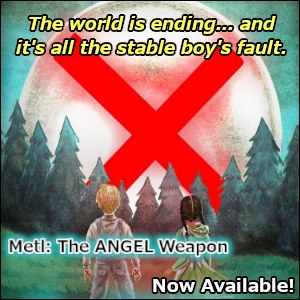Let’s go over 4 things to keep in mind when writing multiple POVs, look at some examples from books, then write our own story from multiple POVs together!
During the last stream, a subscriber requested that we go over how to write multiple points of view.
Watch what we did here, or scroll down for highlights.
How to Write Multiple Points of View
- Writing a story from multiple points of view is arguably one of the hardest things to do as a writer
- Writing a compelling story from just ONE point of view is hard enough, but to craft SEVERAL points of view that will each be compelling to the reader is downright crazy
- With that in mind, I would recommend waiting until you’ve written a few books from one POV before attempting a book written from several POVs
- But! When that time comes, there’s some important things to keep in mind, so let’s go over 4 things to consider when writing multiple POVs
#1. Make sure you NEED multiple POVs
- Ask yourself why you want to write with multiple POVS. If you just want to because it’d be cool/fun, that’s not enough
- Remember: writing a story from several POVs doesn’t make your story interesting, telling a good story makes it interesting
- What do you want to accomplish with multiple POVs? Show multiple sides of a conflict? Show off the breadth of a world? Show the back and forth in a cat and mouse game?
- Let’s take a look at some examples of books that NEED multiple POVs:
– Gone Girl: This adult thriller goes back and forth between the POV of a husband who’s a suspect in the murder/disappearance of his wife, and the POV of the wife who planned her own fake death. The dual POVs are needed to show the back and forth of the two sides trying to outsmart each other, to make it different from the typical mystery/thriller where we only see one side.
– Elantris: This adult fantasy shows three different POVs — a prince who has transformed into a monster and is banished, a foreign priest sent to convert the prince’s city to his country’s religion and take it over, and the prince’s fiancee who is coming to the city for the first time. The triple POVs are necessary to show the breadth of the world and the different sides of multiple conflicts (city vs. monsters, foreign religion vs. city religion)
– One of Us is Lying: This YA mystery starts with five teenagers in detention, when one of them dies suddenly, and the remaining four are all suspects. The book goes between all four of them (a nerdy girl, a jock, a popular girl, and a bad boy), and all the time the reader is trying to figure out which one of them “is lying,” one of the big selling points of the book.
#2. Make each of your POV characters DISTINCT
- Each POV character needs to be extremely different from each other, or else the reader is going to get bored and wonder why they’re reading multiple POVs
- Not only should they be different physically/personality-wise, but they should have different goals, weakness, fears, and more
- Let’s take a look at some examples of books that make their different POV characters DISTINCT:
– Unwind: This dystopian story takes place in a world where teens can be “unwound” by their parents, taking all their organs to donate but still technically keeping them alive. The POV characters are a boy being unwound by his parents because he did bad in school, a girl being unwound because she’s an orphan and the state can’t afford her anymore, and a boy being unwound as part of a religious ceremony. Each of them are very distinct, despite their conflict being centered around the same thing.
– Mr. Mercedes: This thriller is about a retired cop going back and forth via letters/e-mails with a killer who taunts him that he’s going to commit another mass murder. The cop is old, jaded, but wants to do the right things, whereas the murderer is younger, passionate, and wants to do terrible things. Both are very distinct from each other, and their goals are opposite.
– Game of Thrones: Every character in this medieval fantasy is completely different from one another: Eddard, the honor-bound lord of the north; Bran, Eddard’s son who becomes crippled; Sansa, Eddard’s daughter who is a naive young princess-to-be; Arya, Eddard’s adventurous, tomboy daughter; Catelyn, Eddard’s hotblooded wife from the south; Jon, Eddard’s bastard son who wants to leave the north kingdom; Tyrion, the dwarf son of another powerful house; and Danaerys, the princess to a fallen dynasty across the ocean. 6 out of 8 of them are from the same family, but each of them are distinct and have different goals that cross and overlap.
#3. Connect your POV characters TOGETHER from the start
- Looking at the Game of Thrones example, you might be tempted to write a story with multiple POVs that take place all over a world, to show what’s happening in different countries
- But even if the POVs are separated into different countries/worlds/whatever, they still need to be connected somehow
- Two easy ways to do this are: (1) have your characters all start in the same place but then disperse, or (2) have them all react to the same event
- Let’s take a look at some examples:
– Game of Thrones: 7 out of 8 POV characters start at Winterfell, the kingdom in the north. Only Daenerys starts in a different country, and even then, she is still reacting to one of the main conflicts with the other characters: the new king kinda sucks and she wants to reassert her dynasty
– Unwind: The 3 POV characters start in different locations, but they are all reacting to the same event: being unwound. Even then, they come together in a few chapters on a bus en route to an unwinding facility that crashes and they escape from.
– One of Us is Lying: The 4 POV characters start together at the same high school, and in the same detention where the death happens and stay there most of the book
– Elantris: The 3 POV characters start in the same city and stay there most of the book
#4. Change up POV using CHAPTER breaks
- When breaking up your POV changes, don’t try to get fancy — just use chapter breaks when you change POV
- If you try changing POV mid-chapter, it’s going to confuse your readers. Instead, either flesh out the chapter with that character more, or cut it.
- ALL of the example books we went over today use chapter breaks to signal a change in POV, crossing many different genres and age groups
Be sure to watch the video, so you can see the multiple-POV story that chat and I wrote together. It has a plantation wedding, a no-good runaway father, a groom obsessed with buffets and Bigfoot, and a coat-check girl trying to crash everything!
If you want to join us and help write a story by trolling in chat, or share your own writing for feedback, then we’d love to have you join us on Twitch.
And you missed the stream, you can still watch them on the YouTube channel or watch the full stream reruns.
Hope to see you next time, friend!
 Featured image: Pakutaso
Featured image: Pakutaso
